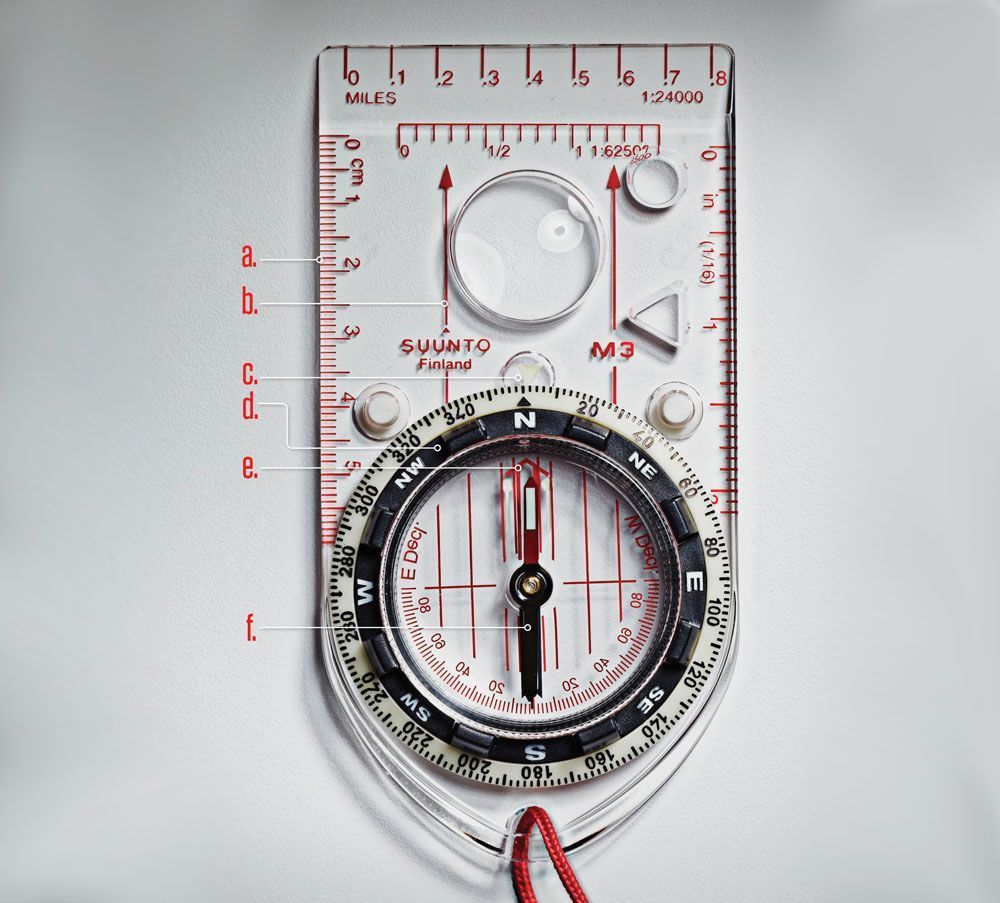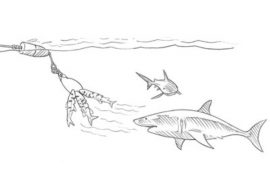
In the movie Pirates of the Caribbean, as you may remember, Johnny Depp’s character, Capt. Jack Sparrow, navigates with a magic compass whose needle points toward the object of the heart’s desire. Orienteering differs in that a topo map has contour lines in place of the galaxy imprinted on Sparrow’s compass, and the needle on a compass points to the magnetic pole of Earth. These tools can still lead you to the object of your heart’s desire—be that a lake teeming with brook trout or base camp after a day of tracking elk. But to harness the true magic of orienteering, you’ll have to master the skills here.
1. Decipher a Baseplate Compass
For orienteering, you need a baseplate compass, consisting of a rotating compass housing mounted on a flat, transparent base. If you don’t have a baseplate compass, buy one before reading further. Orienteering can sound complex, but by placing your own compass over the map illustrations and following these instructions, you’ll discover that it’s actually quite simple—and fun.
2. Read a Topographic Map

A topo map is an eagle’s-eye illustration of the land, with differences in elevation shown via contour lines. (Typically, every fifth line is darker and marked with the elevation.) These contours enable you to interpret a flat piece of paper in three dimensions. With practice, you will be able to see the country in relief, visualizing the rise and fall of the landforms. Map symbols, scale, and declination are keyed at the bottom of the map—they may vary slightly among different mapping systems.

If you can see a landmark, you can navigate toward it by taking a directional bearing. Here’s how:
Step 1: Hold the compass face up at chest level and point the direction-of-travel arrow at a landmark, such…





